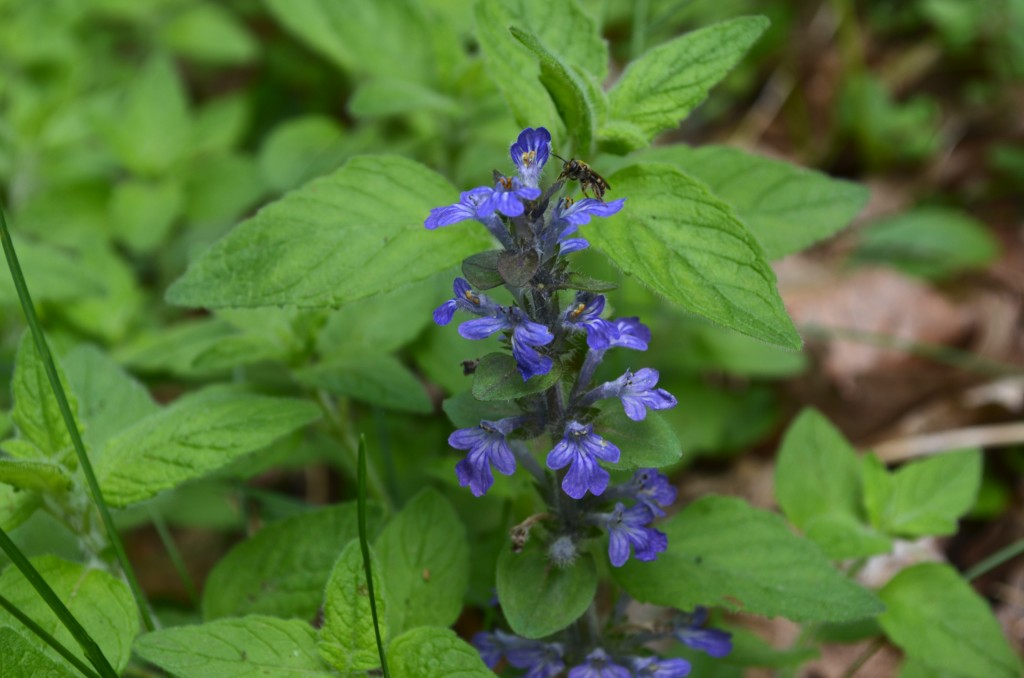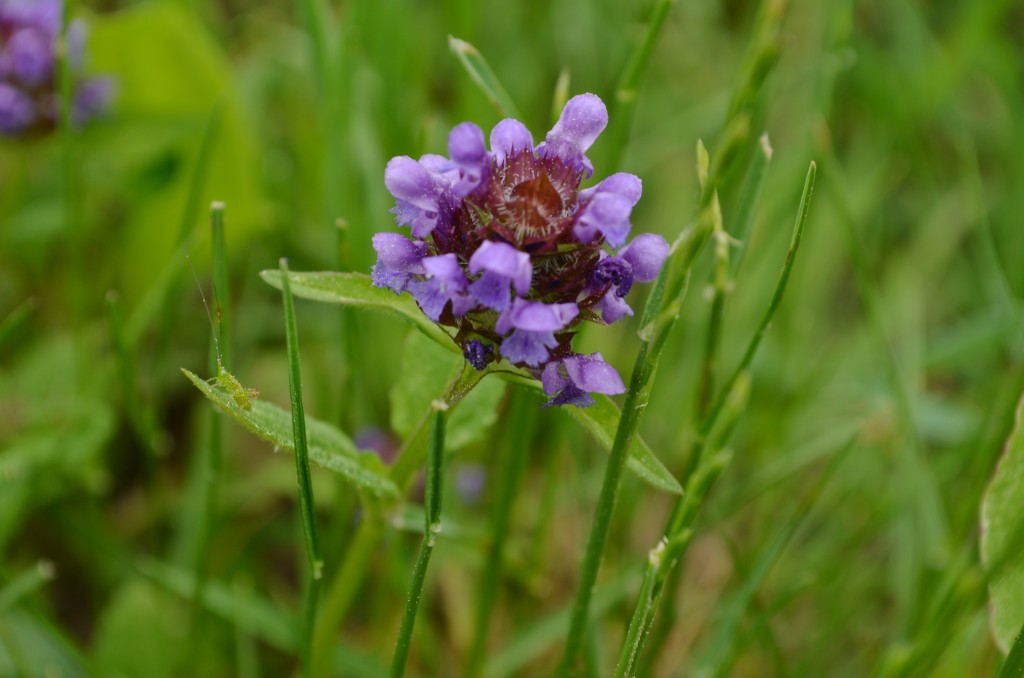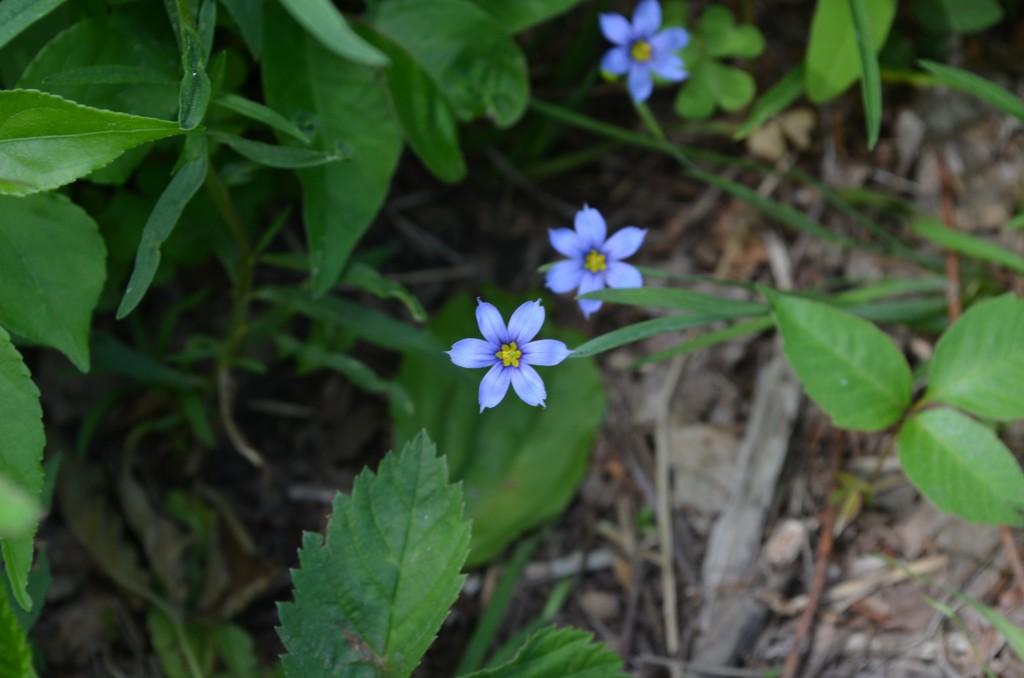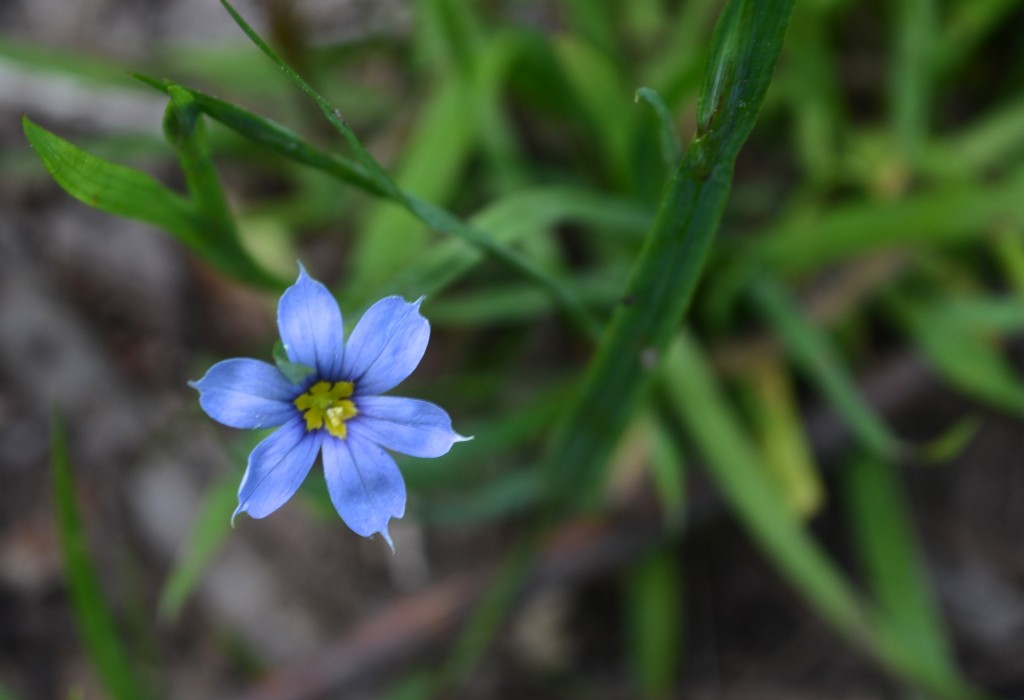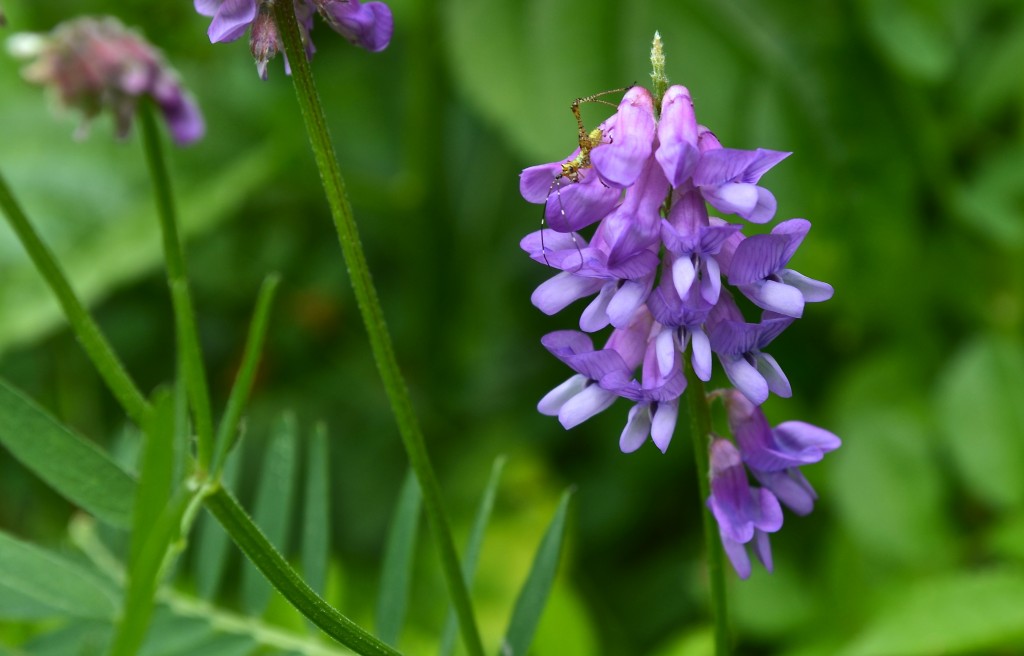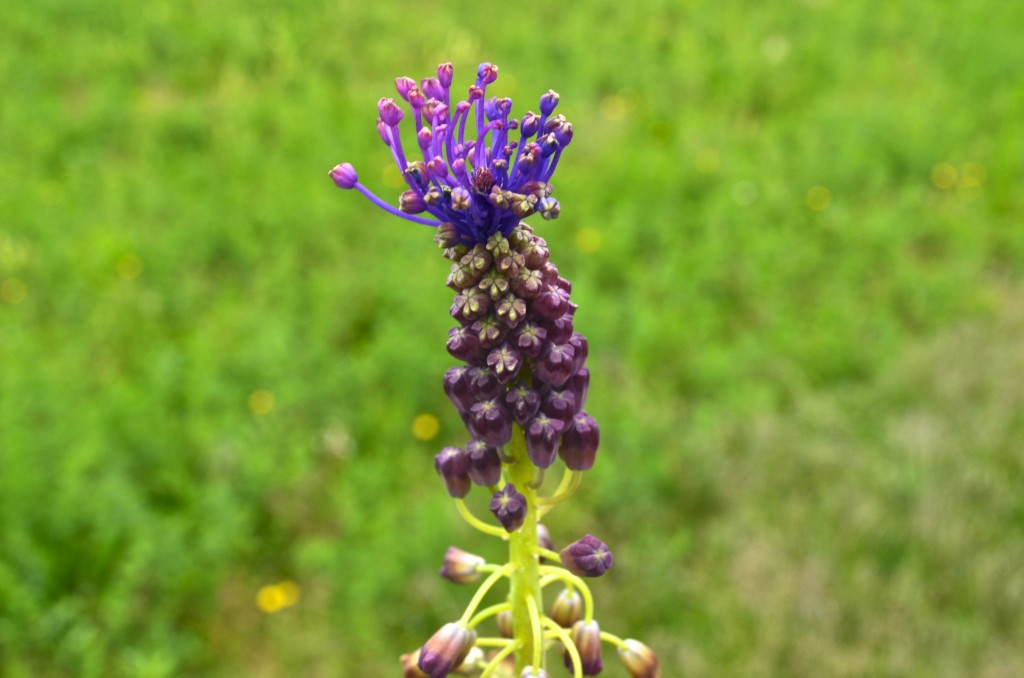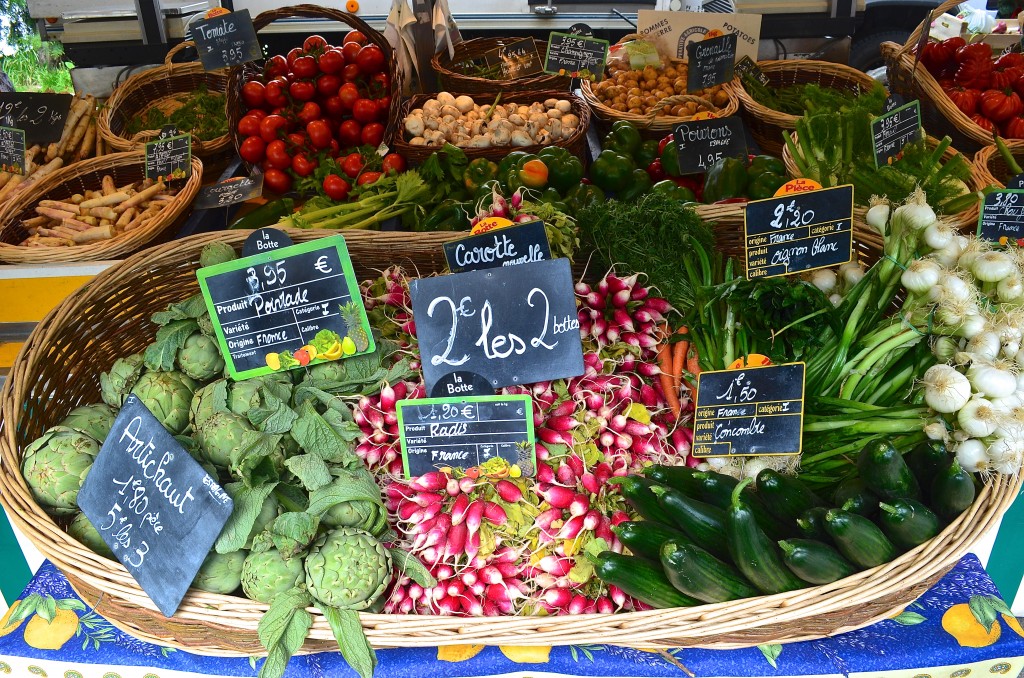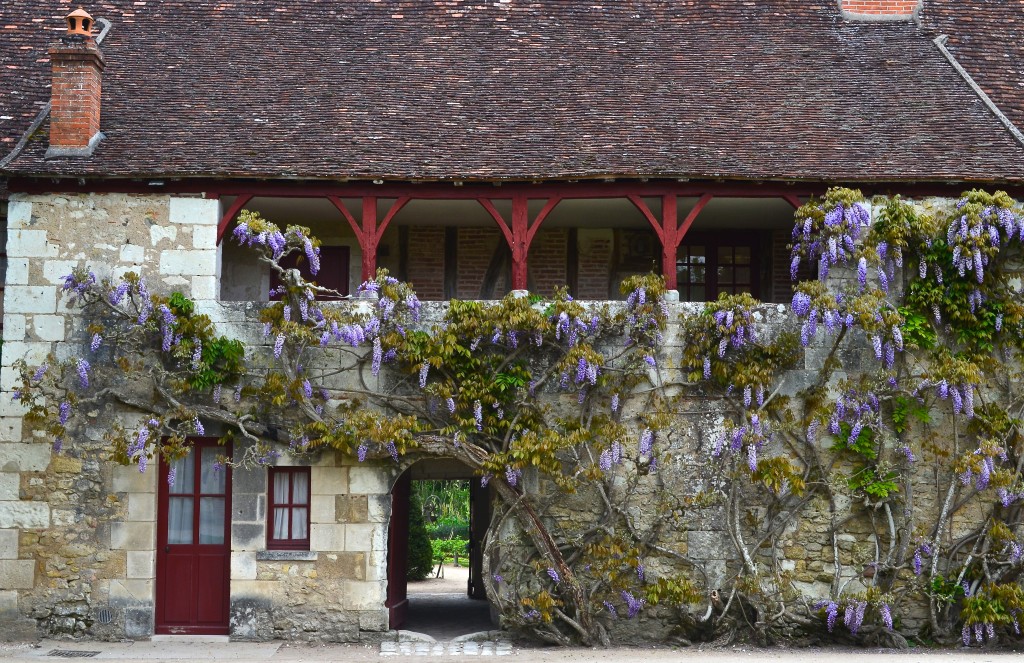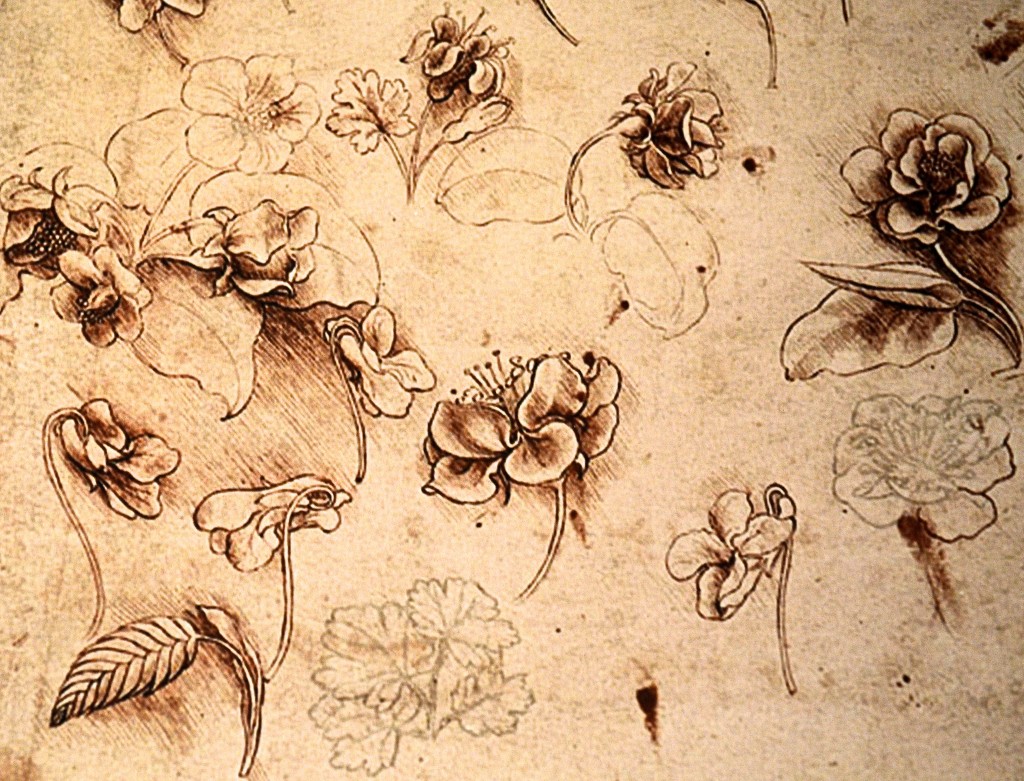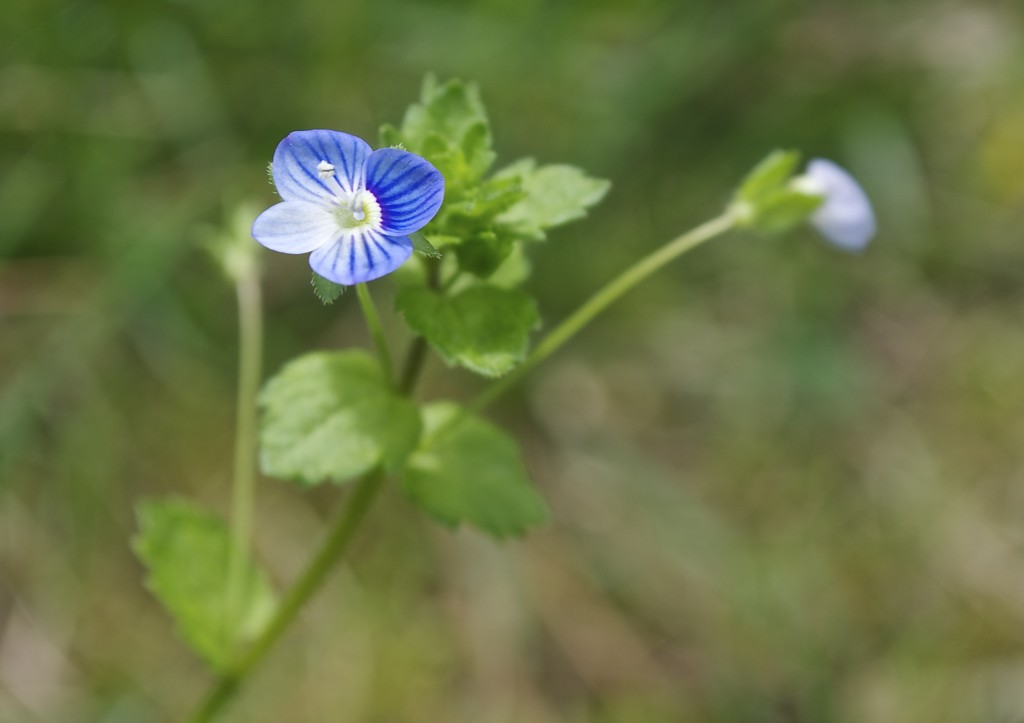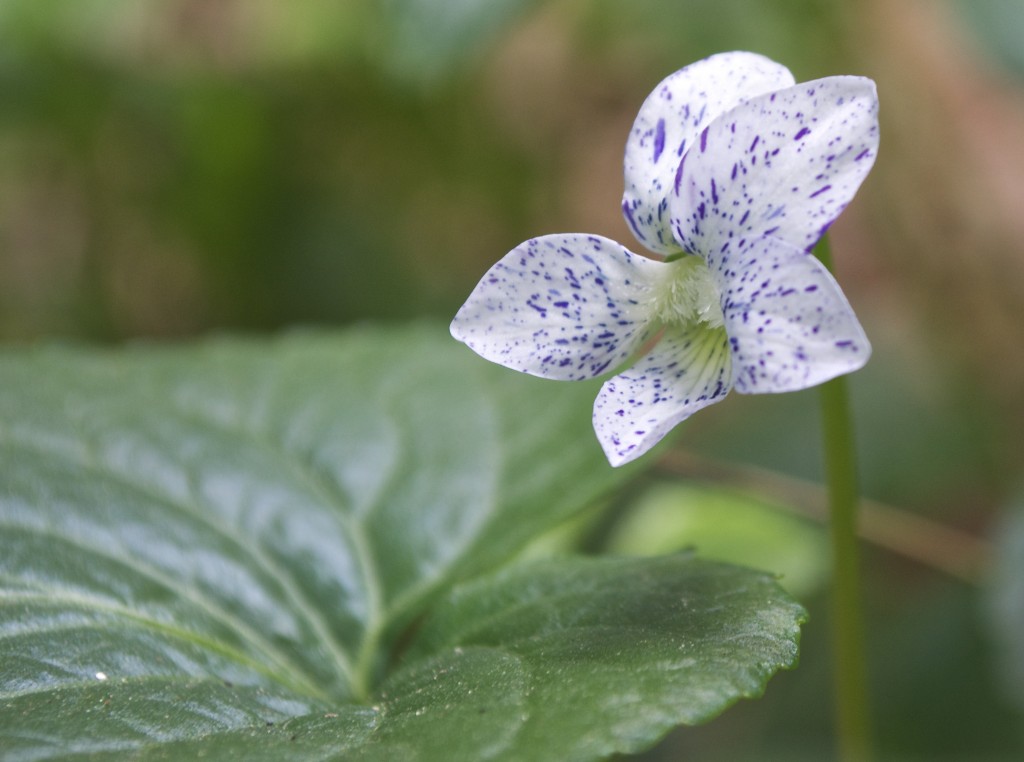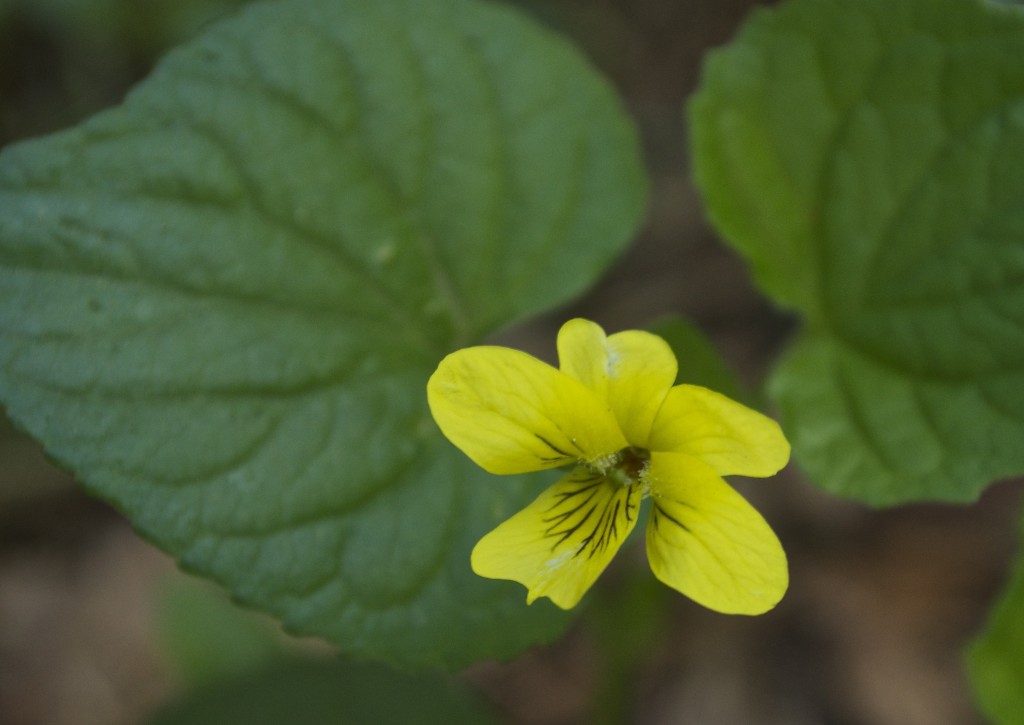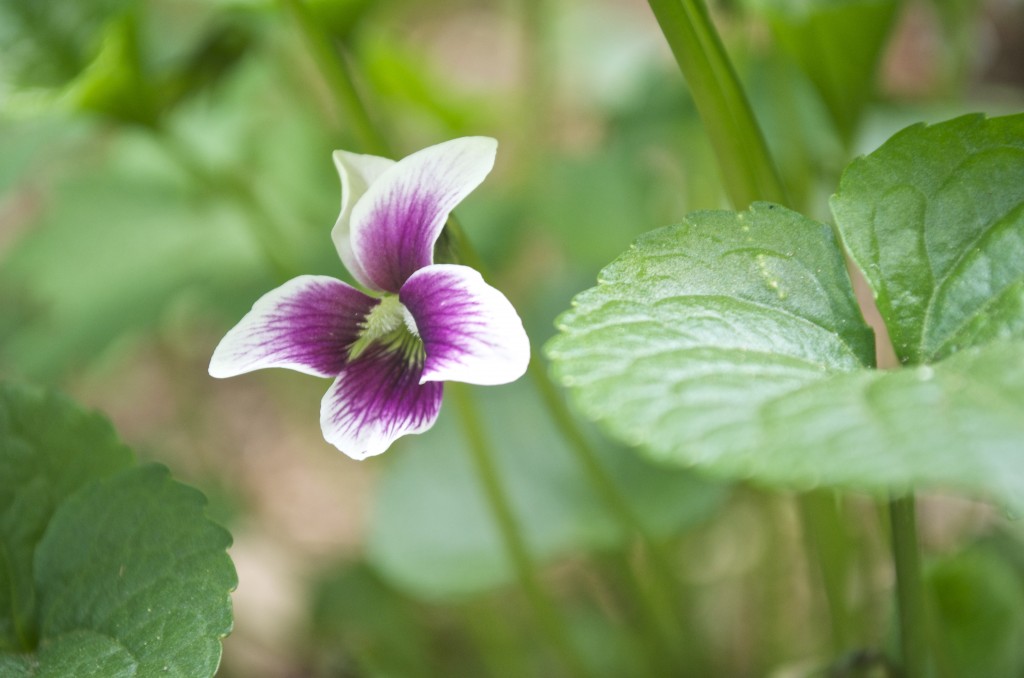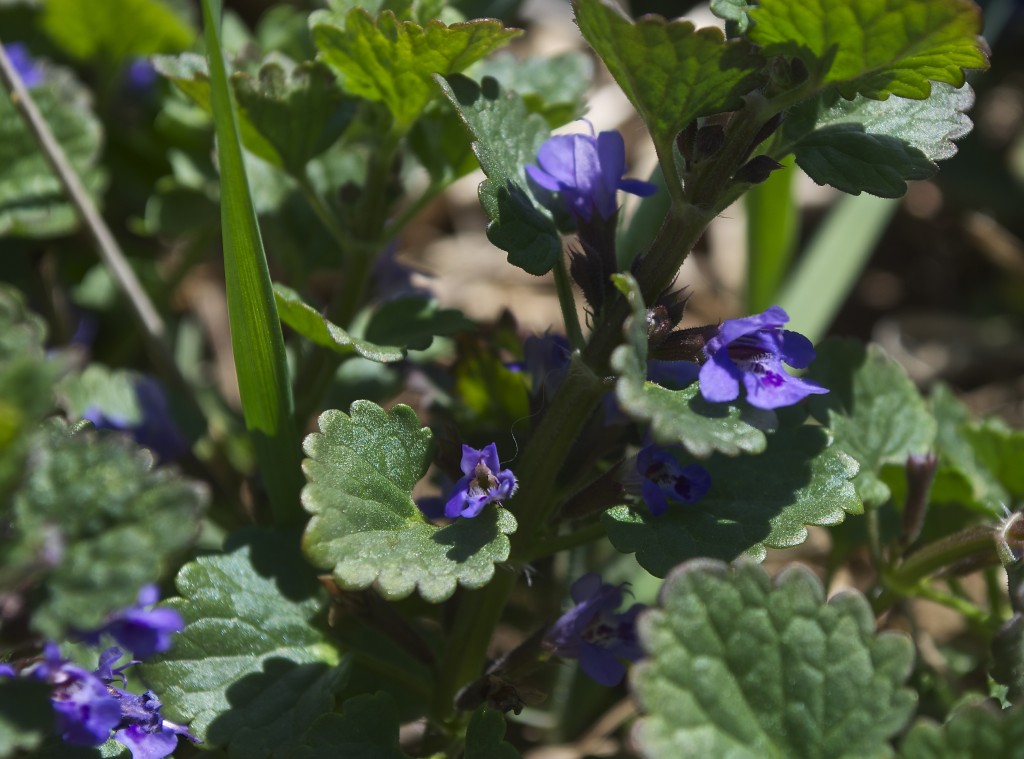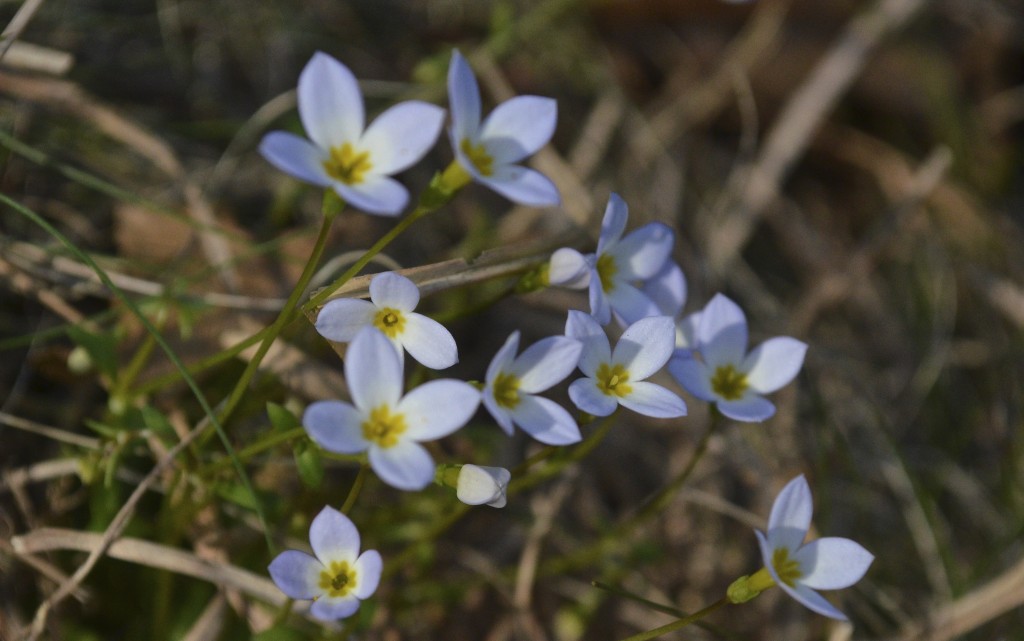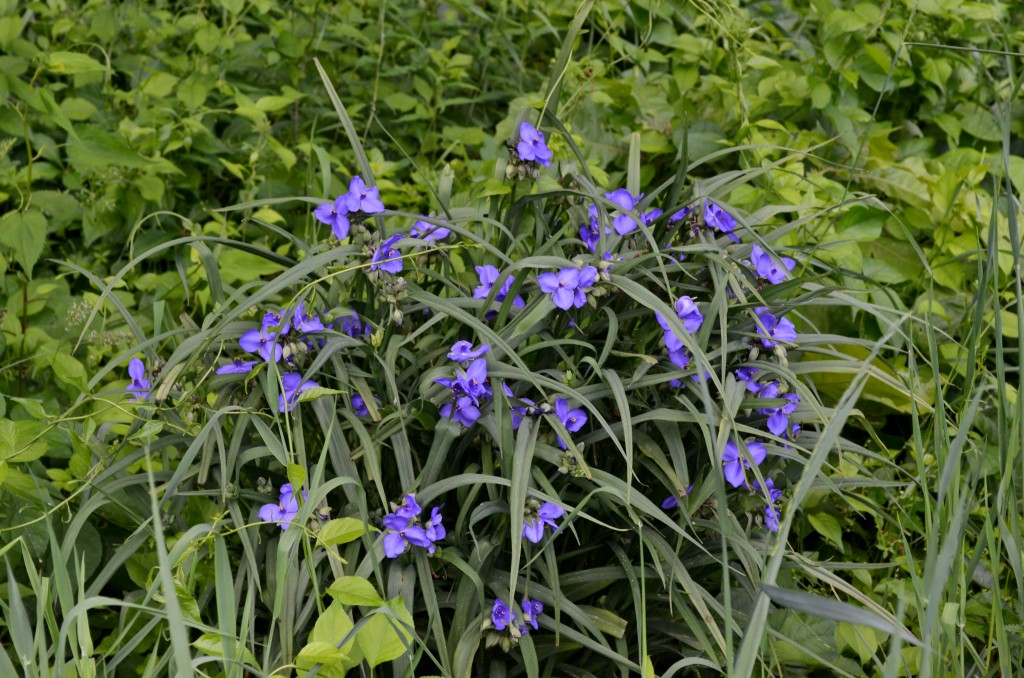
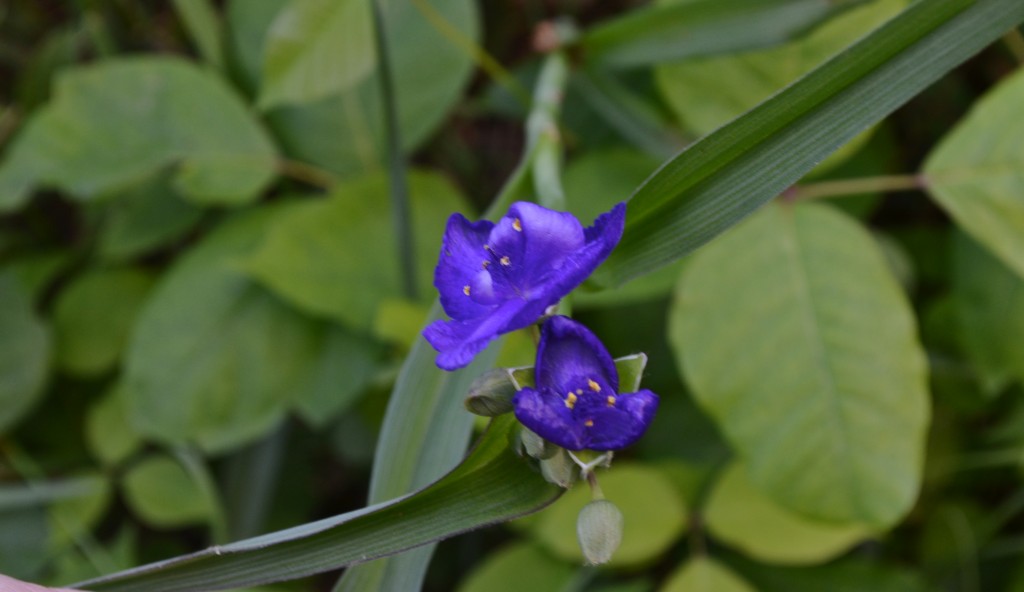
Each flower lives only one day, but each plant produces 20 or more flowers per stem. The sap has a viscous quality and can be stretched between your fingers like a thread of spider silk. The stems, leaves and flowers are edible, raw or added to stew. The flowers can garnish your salad!The Lakota made a blue paint from the flowers and a poultice for insect bites and stings from the crushed leaves.
(The spiderwort genus is named after John Tradescant, who was a gardener for King Charles I of England (1600-1649). His son brought spiderwort seeds or plants from Virginia to England in 1637. It became a popular exotic plant. Native. (Photo June 4.)
Spiderwort, Cow Slobber, Widow’s Tears, Trinity Flower, Indian Paint (Tradescantia virginiana)

